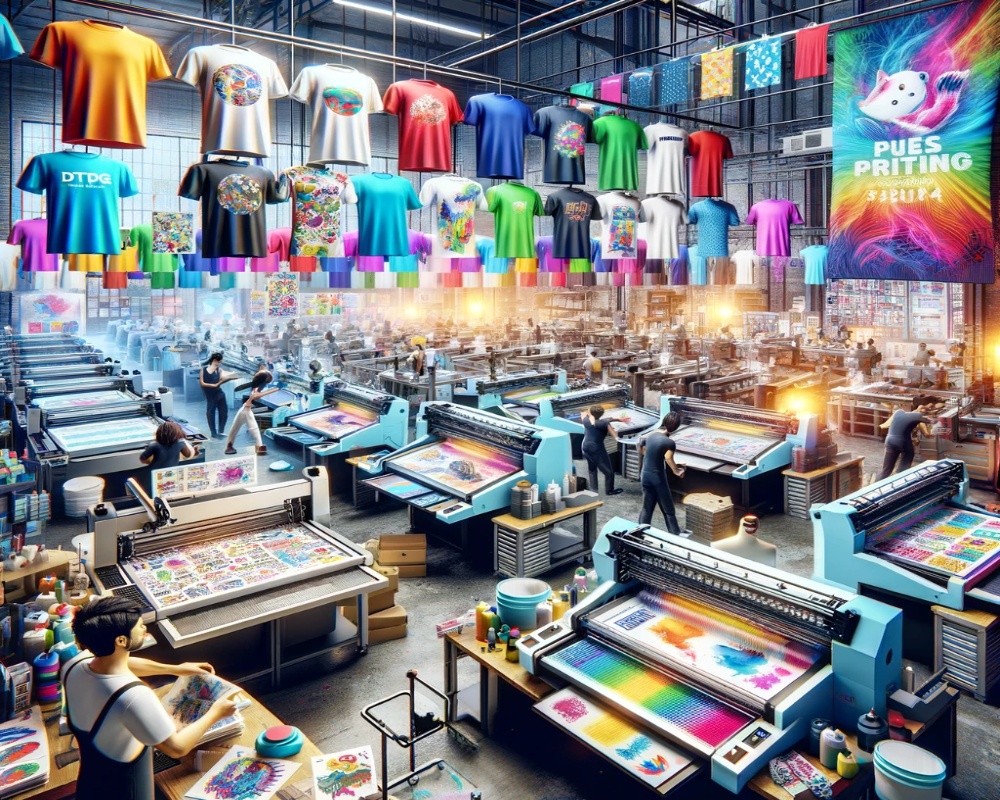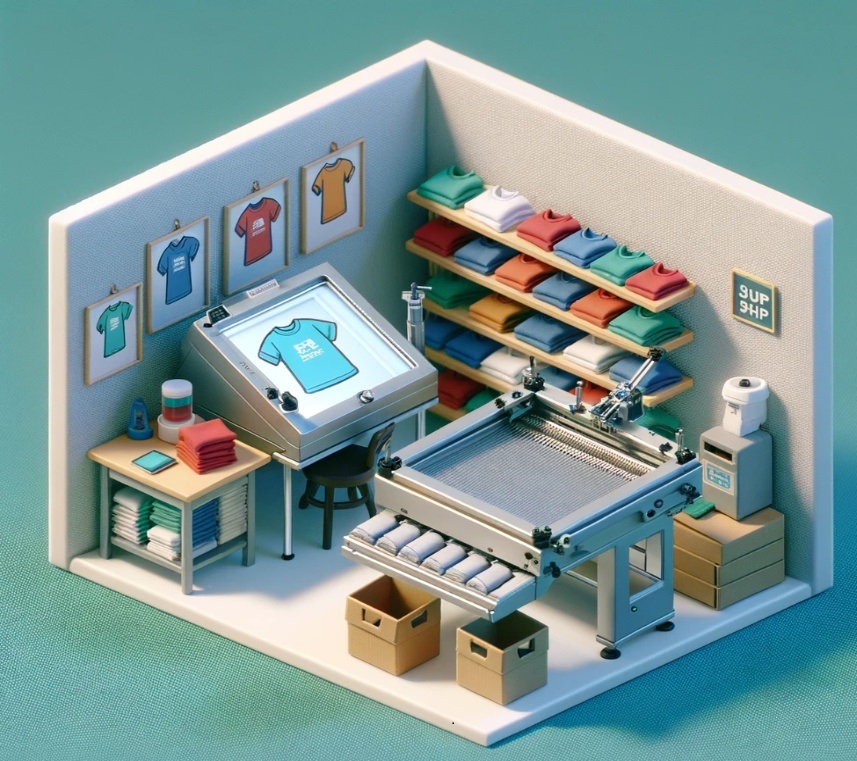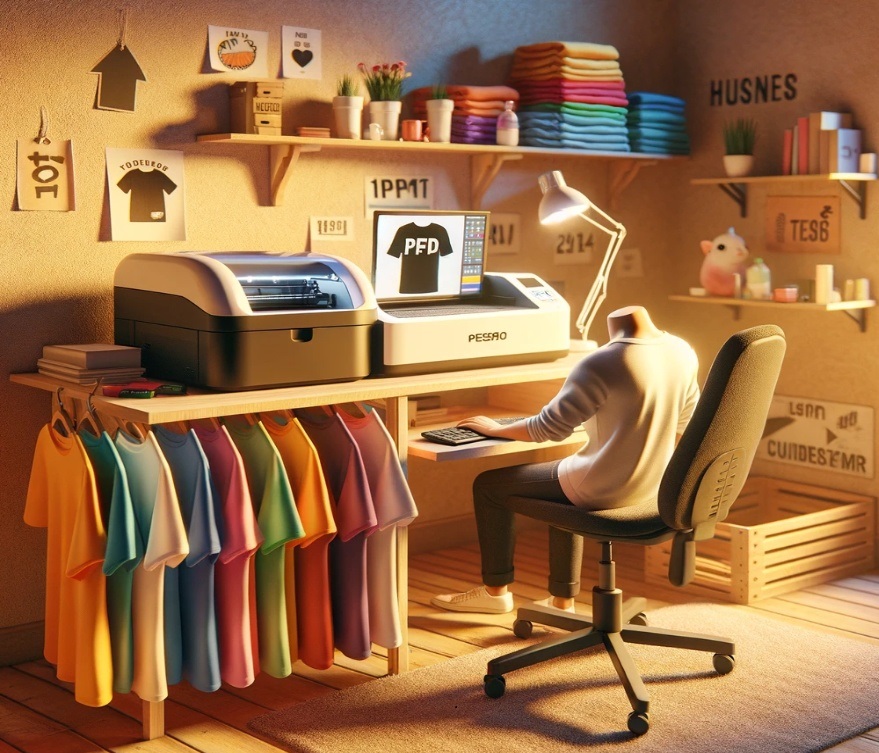
As 2024 unfolds, the T-shirt printing industry stands at a crossroads of tradition and innovation. This sector, often perceived as a vibrant blend of creativity and commerce, continues to evolve with technological advancements and changing consumer trends. But the question lingers: Is T-shirt printing truly a profitable business? Let’s deep into the core of this industry, scrutinizing various aspects such as market dynamics, cost factors, and technological innovations, to unravel the profitability potential of T-shirt printing companies in the current year.
The Market Dynamics of T-Shirt Printing
The demand for custom T-shirts has been consistently growing, driven by trends in fashion, personal expression, and corporate branding. This surge is amplified by the rise of online retail platforms and social media marketing, offering wider reach and convenience for both consumers and businesses. According to recent market analyses, the custom T-shirt printing market is expected to witness significant growth, with a substantial portion of this expansion attributable to the digitalization of print methods and e-commerce integration.
Cost and Profit Analysis of T-Shirt Printing Business
Profitability in T-shirt printing hinges on several cost factors, including production, labour, marketing, and overheads. Advanced printing technologies like DTG (Direct to Garment) and screen printing have different cost implications. For instance, DTG offers lower setup costs and is ideal for small runs, while screen printing becomes cost-effective for bulk orders. A strategic approach to selecting the right technology based on order size and customization requirements can optimize costs and boost profit margins.

Why T-Shirt Printing is Still Profitable?
- High Demand in Various Segments: The continuous demand from individual customers, businesses, and events for personalized T-shirts makes this a lucrative market.
- Advancements in Printing Technology: Modern printing technologies like DTG and screen printing offer cost-effective solutions for both small and large orders, enhancing profitability.
- Versatility in Design and Customization: The ability to offer a wide range of designs and customizations attracts a diverse customer base, increasing sales potential.
- Growth of Online Sales Channels: E-commerce platforms and social media marketing significantly boost sales by reaching a wider audience.
- Niche Marketing Opportunities: Targeting specific niches like eco-friendly products or unique designs can carve out profitable market segments.
Strategies for Struggling T-shirt Printing Businesses to Boost Profitability
- Embrace Digital Marketing: Leveraging SEO and social media can drive more traffic to your website and increase sales.
- Diversify Product Offerings: Expanding the range of t-shirt printing products and services to include items like custom hoodies or accessories can attract new customers.
- Optimize Production Costs: Reviewing and reducing production costs without compromising quality can enhance margins.
- Focus on Quality and Customer Service: High-quality products and excellent customer service can lead to repeat business and word-of-mouth referrals.
- Explore Niche Markets: Identifying and targeting niche markets can differentiate your business from competitors.
- Utilize Efficient Printing Technologies: Investing in the latest printing technologies can increase efficiency and reduce costs.

Selecting the Right Machinery for T-Shirt Printing
The choice of machinery is a crucial factor in the T-shirt printing business, impacting both the quality of output and the efficiency of production. Whether you are looking 3D printing CNC machine or any other machine you should keep in mind whether it will be profitable for your business or not. Let’s discuss different types of T-shirt printing machines and their suitability for various business needs.
1. Direct to Garment (DTG) Printers:
- Ideal for: High-quality, detailed designs and small to medium batch sizes.
- Advantages: DTG printers offer excellent color accuracy and are capable of printing complex, multi-colored designs directly onto the T-shirt.
- Considerations: Higher initial investment but lower cost per unit for small runs; requires a certain level of technical know-how.
2. Screen Printing Machines:
- Ideal for: Large batch sizes and orders with fewer colors.
- Advantages: Economical for large volumes; known for durability and vibrancy of prints.
- Considerations: Requires more space and setup time; not cost-effective for small runs or highly detailed multi-color designs.
3. Heat Press Machines:
- Ideal for: Start-ups and small-scale businesses; versatile for different materials.
- Advantages: Lower initial investment, easy to use, and suitable for a variety of print materials.
- Considerations: Limited to simpler designs and may have durability issues compared to other methods.
4. Sublimation Printers:
- Ideal for: Polyester and polymer-coated substrates.
- Advantages: Vibrant, full-color, and photographic quality prints; the print is absorbed into the fabric, making it durable.
- Considerations: Best suited for light-colored garments; higher running costs.
5. Hybrid Printing Systems:
- Ideal for: Businesses looking to diversify their offerings.
- Advantages: Combines different technologies, like DTG and screen printing, to offer versatility.
- Considerations: Can be expensive; suitable for businesses aiming to scale up and expand their market reach.
Innovative Marketing Strategies for T-Shirt Printing Businesses
In the competitive landscape of T-shirt printing, innovative marketing strategies are crucial for standing out. Here we will explain how businesses can utilize unique marketing tactics to captivate their audience and boost sales.
- Leveraging Influencer Partnerships: Collaborating with social media influencers and fashion bloggers can expand your reach and appeal to a younger, trend-savvy demographic.
- Creating Interactive Online Campaigns: Engage potential customers with interactive campaigns, such as design contests or social media challenges, to increase brand visibility and customer engagement.
- Utilizing Data-Driven Marketing: Employ data analytics to understand customer preferences and tailor marketing efforts for higher conversion rates.
- Offering Limited-Edition Designs: Create a sense of urgency and exclusivity by offering limited-edition or seasonal designs, encouraging prompt purchases.

The Potential of Customization in T-Shirt Printing
Customization is at the heart of the T-shirt printing business, and its potential is vast. Let’s discuss how customization can be a game-changer for profitability.
- Personalized Merchandise for Businesses and Events: Offering bespoke services for corporate events, sports teams, and special occasions can open up lucrative opportunities.
- Collaborating with Artists and Designers: Partnering with artists to offer unique, exclusive designs can attract customers looking for one-of-a-kind apparel.
- Customization Tools on Websites: Integrating easy-to-use design tools on your website allows customers to create their personalized T-shirts, enhancing user experience and satisfaction.
Conclusion
T-shirt printing continues to be a profitable venture in 2024, especially with the right choice of machinery. Whether you’re starting a new business or looking to upgrade your existing setup, understanding the types of printing machines and their respective strengths and applications is key to making informed decisions that align with your business goals and market demands. T-shirt printing, such as those showcased at PrintingNearby, can turn their creative flair into profitable success stories. Particularly, techniques like Vinyl T-shirt Printing, which combines traditional craftsmanship with modern trends, are setting new standards in the industry.
